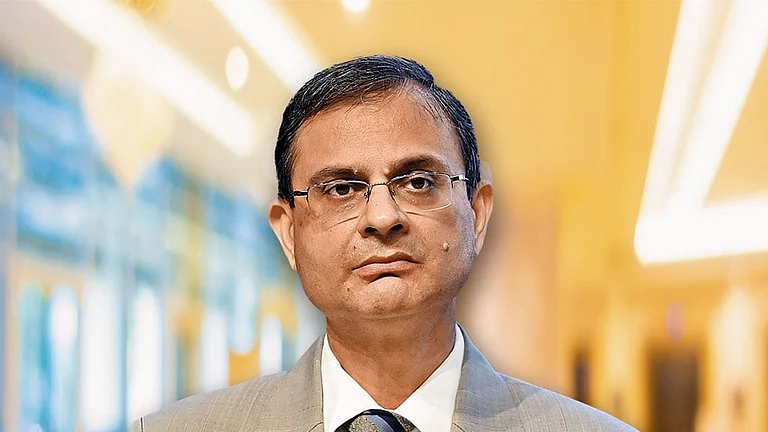The third consecutive repo rate cut, announced in RBI’s June monetary policy committee, paved the way for possible lower home interest rates. So far, the repo rate has been reduced by 100 basis points overall in the first half of 2025 after the central bank previously announced the cut by 50 bps. With the most recent cut of 50 bps, the repo rate now stands at 5.50%.
How RBI’s 50 bps Repo Rate Cut Can Bring Relief to Homebuyers - Explained
The RBI’s latest monetary policy move marks the third straight reduction in the repo rate, bringing it to 5.50%. Alongside this, the CRR was also trimmed by 100 basis points, a shift expected to make home loans cheaper and boost housing demand
Besides the repo rate, the RBI also lowered the CRR (cash reserve ratio) by 100 basis points to 3% from 4% previously. The decision brought cheers among Indian realty players as this will bring down the interest rate on home loans. In simple words, this means that EMIs or the tenure of the home loan will also come down when banks will pass on the benefit to consumers.
"The 100 bps CRR cut should further ease liquidity conditions by ₹2.5 trillion in the banking system and support faster transmission of rate cuts to both deposit and lending rates," said Vikram Chhabra, senior economist, 360 ONE Asset.
Can Rate Cut Revive Affordable Housing?
As per Anarock data, the data of affordable housing in total sales has fallen sharply – from 38% in 2019 to just 18% in 2024. Similarly, its share in new supply declined from 40% to 16%. Yet, a 19% reduction in unsold inventory suggests that end-user demand remains steady. Hence, the trend of reducing rate cuts can ease borrowing costs for developers when banks will pass on the benefits to borrowers.
“These positive impacts may be partially dampened by the ongoing trade tensions and tariffs imposed by the Trump administration, which have increased the cost of imported construction materials and created economic uncertainty. We may see some impact on the demand for luxury and commercial projects. Developers' margins may also get squeezed,” said Anuj Puri, chairman of Anarock Group.
Despite its positive impact on real estate, especially on affordable housing, Puri stated that much depends on how well it can adapt to higher input costs and ongoing global uncertainties. Continued policy support and a shift to domestic sourcing could be critical for sustained growth.
Collier India also echoed the similar view, saying this move is a strong tailwind for affordable and mid-income housing segments as it will lower borrowing costs for buyers and developers, boost homebuyer confidence, and enhance affordability, especially in the affordable and mid-income housing segments.
“It could improve buyers’ sentiment and increase the number of residential property enquiries and conversions. It can also boost sales volumes across key urban markets. Over the medium term, the reduction in the cost of capital is also expected to enhance investor confidence, potentially boosting activity in both residential and commercial real estate segments,” said Vimal Nadar, national director and head of Research at Colliers India.
Will Rate Cut Help Commercial Real Estate?
A lower repo rate reduces borrowing costs and increases liquidity, which are key drivers for infrastructure investment, leasing activity, and corporate capital expenditure. According to Harish Fabiani, Chairman of IndiaLand Properties, the rate cut will also benefit the commercial real estate segment, in addition to the residential segment.
“This reduction could lead to increased leasing activity, greater investor confidence, and a more positive outlook for occupier demand, especially in technology parks and Grade A office spaces. As the cost of capital declines, more businesses may be inclined to expand operations or invest in new facilities, further stimulating demand for high-quality commercial properties with sustainable features,” said Fabiani.
Not only does this enhance balance sheet quality, Ajmera Realty & Infra India CFO Nitin Bavisi said it also translates into a virtuous cycle of growth both for demand and supply — win-win for the overall ecosystem.
What Borrowers Should Do Now?
Speaking about the rate cut, BPTP CFO Manik Malik said borrowers should first check the nature of their loan. Those with fixed-rate loans will not see immediate benefits and may consider switching to floating-rate options. He suggested that it's a good time to explore refinancing if other lenders offer lower interest rates; however, weigh the costs like processing fees before switching.
"With growing competition, banks are often open to revising rates to retain customers. Additionally, making part-prepayments can reduce the principal and overall interest burden over time if financially feasible. Proactive management of your home loan now can result in significant long-term savings," he added.
Rakesh Malhotra, founder and chairman of PRIME Developments, also asserted that the homebuyers should take an immediate action now because they can save more after the rate cut. For example, on a ₹1 crore loan over 20 years, borrowers could save around ₹3,000 per month on EMIs.
"Reducing your loan tenure rather than merely decreasing your EMIs would optimise the advantages by drastically cutting the overall amount of interest paid. For faster rate transfer and more savings, think about moving to a repo-linked regime if your loan isn't already," he said.
While challenges remain, especially on the input cost front, this policy easing sets a positive tone for the revival of affordable housing and commercial realty growth. Borrowers should proactively explore refinancing and flexible loan options to maximise benefits as banks extend the rate cuts to borrowers.



